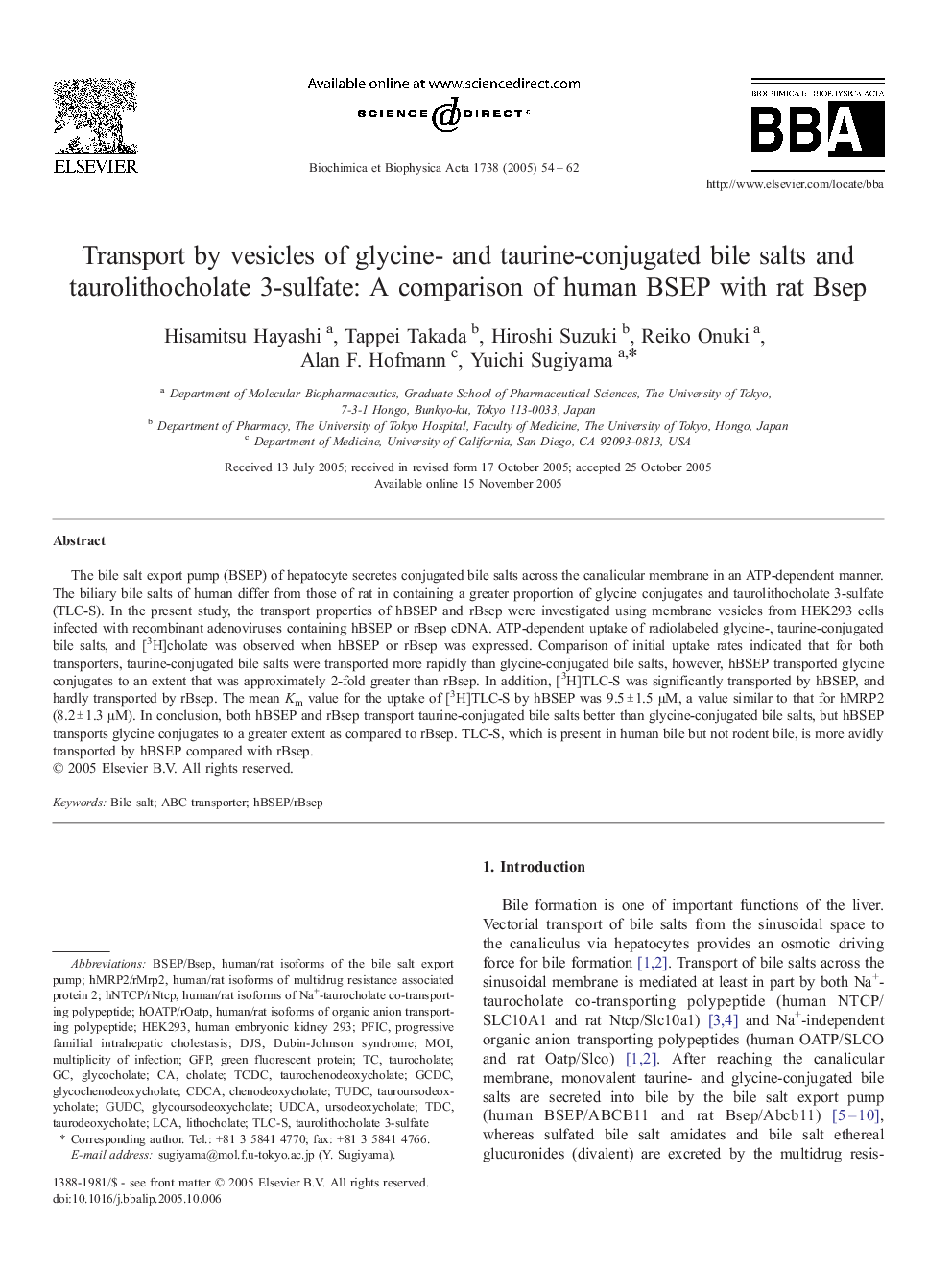| Article ID | Journal | Published Year | Pages | File Type |
|---|---|---|---|---|
| 9886462 | Biochimica et Biophysica Acta (BBA) - Molecular and Cell Biology of Lipids | 2005 | 9 Pages |
Abstract
The bile salt export pump (BSEP) of hepatocyte secretes conjugated bile salts across the canalicular membrane in an ATP-dependent manner. The biliary bile salts of human differ from those of rat in containing a greater proportion of glycine conjugates and taurolithocholate 3-sulfate (TLC-S). In the present study, the transport properties of hBSEP and rBsep were investigated using membrane vesicles from HEK293 cells infected with recombinant adenoviruses containing hBSEP or rBsep cDNA. ATP-dependent uptake of radiolabeled glycine-, taurine-conjugated bile salts, and [3H]cholate was observed when hBSEP or rBsep was expressed. Comparison of initial uptake rates indicated that for both transporters, taurine-conjugated bile salts were transported more rapidly than glycine-conjugated bile salts, however, hBSEP transported glycine conjugates to an extent that was approximately 2-fold greater than rBsep. In addition, [3H]TLC-S was significantly transported by hBSEP, and hardly transported by rBsep. The mean Km value for the uptake of [3H]TLC-S by hBSEP was 9.5 ± 1.5 μM, a value similar to that for hMRP2 (8.2 ± 1.3 μM). In conclusion, both hBSEP and rBsep transport taurine-conjugated bile salts better than glycine-conjugated bile salts, but hBSEP transports glycine conjugates to a greater extent as compared to rBsep. TLC-S, which is present in human bile but not rodent bile, is more avidly transported by hBSEP compared with rBsep.
Keywords
BSEP/BsepglycoursodeoxycholateGUDCTuDCUrsodeoxycholateTaurochenodeoxycholatetcdCchenodeoxycholatecholateTaurodeoxycholatetauroursodeoxycholateTDCGCDCDJSGFPPFICHEK293UDCACDCAABC transporterMOILCAtaurocholateDubin-Johnson syndromeLithocholateBile saltgreen fluorescent proteinmultiplicity of infectionProgressive familial intrahepatic cholestasishuman embryonic kidney 293glycochenodeoxycholateGlycocholate
Related Topics
Life Sciences
Biochemistry, Genetics and Molecular Biology
Biochemistry
Authors
Hisamitsu Hayashi, Tappei Takada, Hiroshi Suzuki, Reiko Onuki, Alan F. Hofmann, Yuichi Sugiyama,
